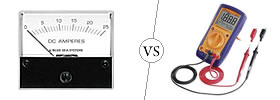Difference between Open Heart Surgery and Angioplasty
Key Difference: Open heart surgery deals with the structures inside the heart. In an open-heart surgery, a large incision (cut) in the chest is made to open the rib cage. A heart-lung machine is required in an open heart surgery. An angioplasty is a procedure in which coronary arteries are unblocked. An angioplasty procedure does not require an open heart surgery.
 Open heart surgery is traditionally associated with the types of surgery that involves cracking the walls of the chest. However, the other types of open heart surgery includes less invasive surgeries in which small incisions are made between ribs. In broad context, it refers to a type of surgery that involves repairing or fixing structures that are located inside the heart. In this type of surgery, the chest wall is surgically opened and the heart is exposed. "Open" refers to the chest not the heart. However in few cases, surgeon may also open the heart. This surgery is performed on the muscles, valves, or arteries of the heart. The function of the heart during this surgery is conducted by a heart-lung machine. During this surgery, heart beats are temporarily stopped and the demand of oxygen is fulfilled by a heart-lung machine. Special tubes called cannular are placed in the veins as well as in the arteries of the heart. A variant of open heart surgery is known as the beating heart surgery. In this type of surgery, the heart is not stopped from beating.
Open heart surgery is traditionally associated with the types of surgery that involves cracking the walls of the chest. However, the other types of open heart surgery includes less invasive surgeries in which small incisions are made between ribs. In broad context, it refers to a type of surgery that involves repairing or fixing structures that are located inside the heart. In this type of surgery, the chest wall is surgically opened and the heart is exposed. "Open" refers to the chest not the heart. However in few cases, surgeon may also open the heart. This surgery is performed on the muscles, valves, or arteries of the heart. The function of the heart during this surgery is conducted by a heart-lung machine. During this surgery, heart beats are temporarily stopped and the demand of oxygen is fulfilled by a heart-lung machine. Special tubes called cannular are placed in the veins as well as in the arteries of the heart. A variant of open heart surgery is known as the beating heart surgery. In this type of surgery, the heart is not stopped from beating.
 Angioplasty refers to a non-surgical procedure that is used to open blocked heart arteries. It is generally performed to treat the patients suffering from cardiovascular diseases. The procedure improves blood flow in the arteries and veins of the body. In the procedure known as balloon angioplasty, imaging techniques are employed to guide a balloon tipped catheter which is a long and thin plastic tube, into the artery or vein. The catheter is made to reach to the vessel which is narrow or blocked. The balloon is inflated so that the vessel opens up. After the successful opening of the vessel, the balloon is deflated and finally removed.
Angioplasty refers to a non-surgical procedure that is used to open blocked heart arteries. It is generally performed to treat the patients suffering from cardiovascular diseases. The procedure improves blood flow in the arteries and veins of the body. In the procedure known as balloon angioplasty, imaging techniques are employed to guide a balloon tipped catheter which is a long and thin plastic tube, into the artery or vein. The catheter is made to reach to the vessel which is narrow or blocked. The balloon is inflated so that the vessel opens up. After the successful opening of the vessel, the balloon is deflated and finally removed.
Comparison between Open Heart Surgery and Angioplasty:
|
|
Open Heart Surgery |
Angioplasty |
|
Definition |
Open heart surgery deals with the structures inside the heart. In an open-heart surgery, a large incision (cut) in the chest is made to open the rib cage. A heart-lung machine is required in an open heart surgery. |
Angioplasty refers to a non-surgical procedure that is used to open blocked heart arteries. It is generally performed to treat the patients suffering from cardiovascular diseases. |
|
Category |
Surgery |
Non- surgical procedure |
|
Types |
|
|
|
Potential candidate |
It is usually done if a patient has a triple vessel disease, in which the main arteries of the heart are blocked. |
It is usually done on a patient with 1 or 2 blocked vessels. |
|
Risks |
Mentioning some of the risks involved in the surgery -
|
Mentioning some of the risks involved in the procedure of angioplasty -
|
Image Courtesy: indicure.com.ng, desertcardiology.com









Add new comment